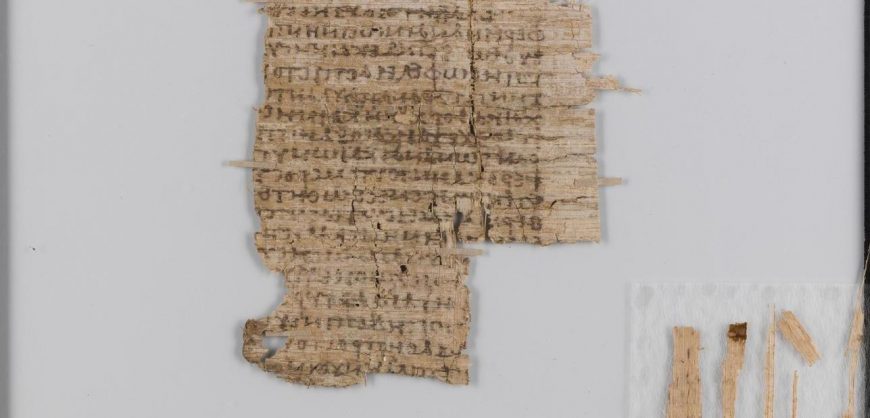
Because of the gaps, many parts of the text are now missing. All of the artifact shows large gaps and the rim of the scrolls is badly frayed. Some of the fibres are now lying over the inscription. Because of the paper lamination during the eighteenth century, all the papyrus fragments are partially damaged at several spots the material is torn, distorted, and squashed.
#Papyrus author free free#
The edges of all three parts were left free for air circulation. The adhesive used for this has partially lost its transparency and a whitish haze has appeared. Part three was simply placed between two glass panes and was completely glued to them. Part two was fixed to a cardboard and wooden plate and is covered by a glass pane. At five spots the papyrus was fixed to the glass with methyl cellulose. Part one was fixed onto linen and placed between two glass panes. The papyrus textile is grainy, of greyish-yellowish colour and very fragile. The first part contains on the recto (the front) columns one to three, the second part contains on its recto columns four and five and the third part contains on the verso (the back) columns six to nine and on the recto, the final columns, ten to twelve. The text written on the papyrus includes twelve columns in all. During the life of Lepsius and Erman it was in two parts it is not known when and why the scroll was separated into three fragments. The scroll of Westcar has been separated into three parts. Papyrus Westcar is a reused papyrus made of the plant Cyperus papyrus. Since Erman's first attempt at a complete translation in 1890, the Westcar Papyrus has been translated numerous times, resulting in different outcomes. As the hieratic signs were still insufficiently investigated and translated, the Westcar Papyrus was displayed as some kind of curiosity. In 1886, German Egyptologist Adolf Erman purchased the papyrus from Lepsius' son and left it to the Museum of Berlin. These inconsistencies have led to widespread speculation many British historians speculate that Lepsius may have stolen the papyrus. Furthermore, Lepsius never made the text of the Westcar Papyrus public he stored the papyrus at home in his attic, where it was found after his death. Lepsius writes that the document was on display in the Oxford Bodleian Library, but public exhibitions have been documented there since the early 1860s and Lepsius' name does not appear in any lists or documents. There are inconsistencies about the true nature of the acquisition and the subsequent whereabouts of the Westcar Papyrus. As Lepsius was able to read some signs of Hieratic, he recognized some of the royal cartouche names of the kings and dated the text to the Old Kingdom. In 1838 or 1839, German Egyptologist Karl Richard Lepsius claimed to have received the papyrus from Westcar's niece. For unknown reasons he didn't note the exact circumstances under which he obtained the artifact. In 1823 or 1824, British adventurer Henry Westcar apparently discovered the papyrus during travels in Egypt. The papyrus is now on display under low-light conditions in the Egyptian Museum of Berlin. The papyrus has been used by historians as a literary resource for reconstituting the history of the Fourth Dynasty. Linguist and Egyptologist Verena Lepper thinks it is possible that the Westcar Papyrus was written during the Thirteenth Dynasty. Miriam Lichtheim dates the document to the Hyksos period (eighteenth to sixteenth century BC) and states that it is written in classical Middle Egyptian.


The surviving material of the Westcar Papyrus consists of twelve columns written in hieratic script.

In German, into which the text of the Westcar Papyrus was first translated, it is rendered as Die Märchen des Papyrus Westcar ("the fairy tales of Papyrus Westcar"). The story in the papyrus usually is rendered in English as, "King Cheops and the Magicians" and "The Tale of King Cheops' Court". In the papyrus text, each of these tales are told at the royal court of king Khufu (Cheops) ( Fourth Dynasty) by his sons. Berlin 3033) is an ancient Egyptian text containing five stories about miracles performed by priests and magicians. The Westcar Papyrus ( inventory-designation: P. Westcar Papyrus on display in the Ägyptisches Museum, Berlin


 0 kommentar(er)
0 kommentar(er)
